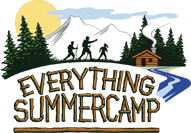Bullying has received a lot of recent press, especially as more and more schools adopt anti-bullying programs in their curriculum. Witnessing school shootings that were, in part, retaliation for relentless bullying may have increased our empathy toward both bullies and their targets, as well as our motivation to change. But tragic events, additions to curricula and press coverage have all made it seem as if bullying is new. It might surprise you to learn that camping professionals have been taking a systematic, proactive role in preventing bullying since 1929. That year marked the publication of Camping and Character: A Camp Experiment in Character Education.
part, retaliation for relentless bullying may have increased our empathy toward both bullies and their targets, as well as our motivation to change. But tragic events, additions to curricula and press coverage have all made it seem as if bullying is new. It might surprise you to learn that camping professionals have been taking a systematic, proactive role in preventing bullying since 1929. That year marked the publication of Camping and Character: A Camp Experiment in Character Education.
In Camping and Character, authors Hedley Dimock and Charles Hendry reported on the results of a multi-year study conducted at Camp Ahmek in Ontario. The study sought to uncover the changes evidenced in campers’ behavior during six weeks at camp and to understand the mechanisms behind those changes. Among the more than 50 behaviors the authors tracked was bullying. Dimock and Hendry recognized that even small increases in bullying behavior needed to be addressed by the camp leadership. They were also encouraged by huge increases in many prosocial behaviors, such as “Making a friendly approach to [an] unlikable boy.”
Nearly 80 years later, what are the most important things we’ve learned about bullying? The answer has three parts. First, bullying itself is only half the picture. For every bully, there is at least one target. Second, bullying is cyclic. A recent study by the Center for Disease Control confirmed that about three quarters of bullies are also targets and about three quarters of targets turn around to bully another child. Third, bullying is social. Antisocial, to be sure, but it represents a  dynamic, complex, interaction whose origins lie in unhealthy relationships. Therefore, the solutions lie not in simple punishment, but in the formation of healthy relationships.
dynamic, complex, interaction whose origins lie in unhealthy relationships. Therefore, the solutions lie not in simple punishment, but in the formation of healthy relationships.
Summer camps are uniquely suited to deal with bullying because they are such healthy social environments. At camp, leaders supervise children and have opportunities to educate bullies and targets. Leaders can teach the kinds of prosocial behaviors Dimock, Hendry and their pioneering predecessors saw so often at camps. This is easier to do than most people think, partly because bullying is so often a misguided attempt to make a social connection. If you can teach a bully how to make a social connection without using coercion, threats or violence, you have actually met that child’s needs instead of simply punishing his or her misbehavior.
Specifically, camps help children in the following ways:
• By having the camp staff set a sterling interpersonal example for all children to follow.
• By seeing beyond the bully alone and including his or her target in an intervention.
• By strengthening bullies’ fragile sense of themselves by providing opportunities for authentic achievement and human connection in various athletic or artistic domains.
• By teaching bullies to make social connections through healthy interaction.
• By teaching targets to stand up to bullies in ways that makes bullying unrewarding.
• By setting, early and often in the camp session, strict guidelines for kindness and generosity…and then heaping on the praise when staff witness prosocial behaviors.
• By providing the kind of close supervision that allows both bullies and targets to replay unacceptable or unassertive interactions under the guidance of experienced adult staff.
• By deliberately creating a culture of caring that is perhaps different from school or the neighborhood at home…and then immersing children in that culture.
• By allowing positive peer pressure to exert itself such that children feel appreciated and rewarded for gentleness, honesty, kindness and unselfishness.
Camps are not a bullying panacea. Outside of camp, there are powerful forces, such as violent media, that infuse children with the notion that violent, even lethal solutions to vexing social problems are both effective and glorious. Nevertheless, camp is a powerful, positive force for change. Educating bullies and their targets is just one of the many ways camp enriches lives and changes the world.
So next time you’re talking with your child’s camp director, don’t ask whether they have a bullying prevention program. If all your camp is doing is trying to prevent bullying, that’s not enough. Instead, ask, “When instances of bullying occur, what are the ways your camp’s leaders teach bullies and their targets alternative, prosocial behaviors?” and “How does your camp create a culture that exerts positive peer pressure?”
Enjoy the summer!

Dr. Christopher Thurber

 could go with the High Sierra Water Bottle Sport Duffel. There’s no shortage of storage space in this bag! It’s got a zippered wet pocket where you can keep your shoes after they’ve met a puddle or if any other gear should get wet. And it comes with a water bottle so you’re sure to stay hydrated on the go! You’ll be ready for any camp excursions with the High Sierra Water Bottle Sport Duffel.
could go with the High Sierra Water Bottle Sport Duffel. There’s no shortage of storage space in this bag! It’s got a zippered wet pocket where you can keep your shoes after they’ve met a puddle or if any other gear should get wet. And it comes with a water bottle so you’re sure to stay hydrated on the go! You’ll be ready for any camp excursions with the High Sierra Water Bottle Sport Duffel.

 Manager of the print shop, Nate has many responsibilities to tend to on a daily basis which includes overseeing production, keeping an eye out for quality control in running production, product development, scheduling, and purchasing. Needless to say, Nate’s a busy man—but always good for a laugh or interesting conversation over lunch.
Manager of the print shop, Nate has many responsibilities to tend to on a daily basis which includes overseeing production, keeping an eye out for quality control in running production, product development, scheduling, and purchasing. Needless to say, Nate’s a busy man—but always good for a laugh or interesting conversation over lunch.
 every aquatic mistake well-trained lifeguards make. And that experience has taught me the importance of redundancy. Safety systems need back-up safety systems. And that’s where you, as a parent, come in.
every aquatic mistake well-trained lifeguards make. And that experience has taught me the importance of redundancy. Safety systems need back-up safety systems. And that’s where you, as a parent, come in. • Teach your child to enjoy the water in buddy pairs, never as singletons. This might be a parent-child buddy pair at the beach, under the watchful eye of a trained lifeguard. Or, it might be a pool party in the backyard, where every young guest has a swimming buddy.
• Teach your child to enjoy the water in buddy pairs, never as singletons. This might be a parent-child buddy pair at the beach, under the watchful eye of a trained lifeguard. Or, it might be a pool party in the backyard, where every young guest has a swimming buddy.



